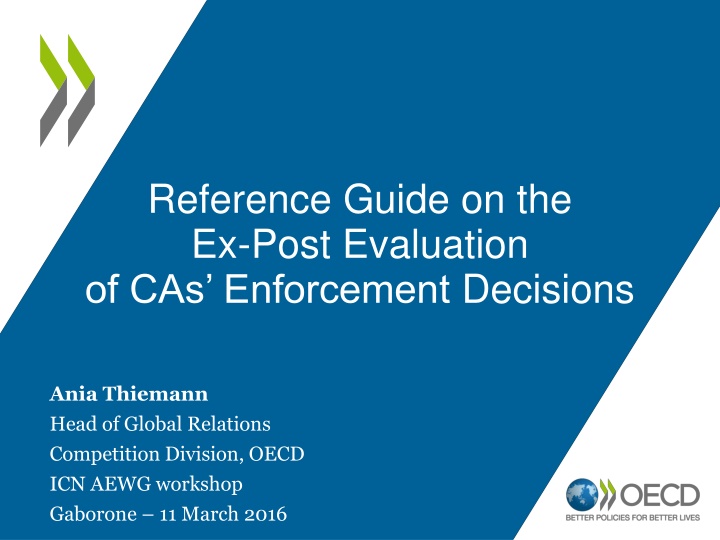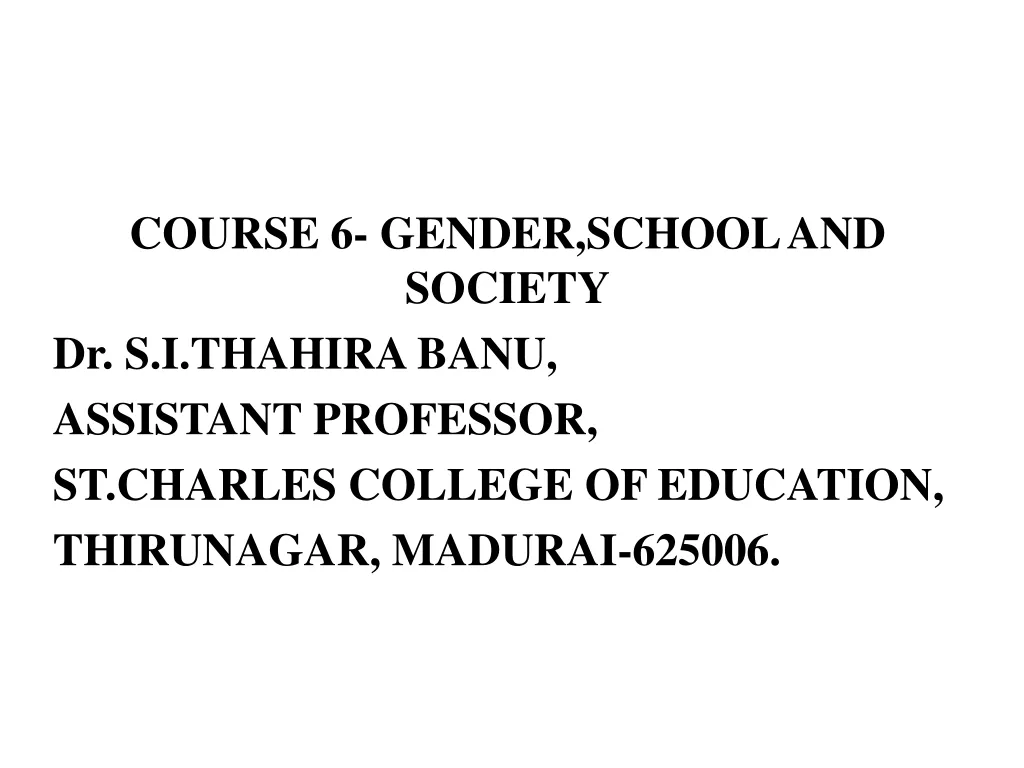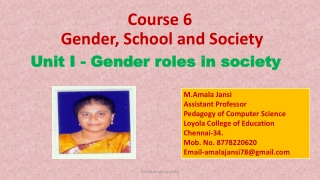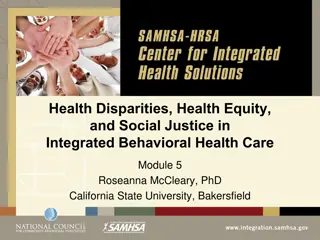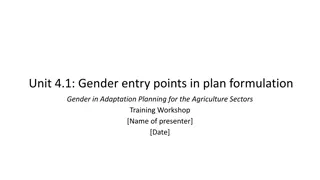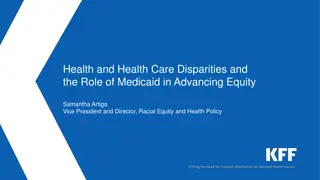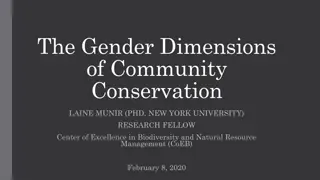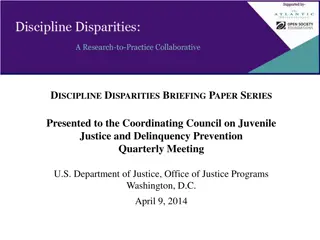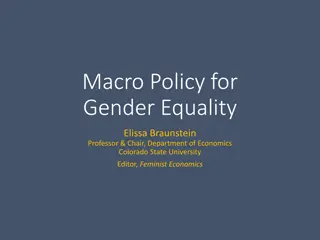Gender Disparities in Education Systems
Global education patterns are evolving, but gender inequalities persist in primary and secondary school enrolment, hindering girls' potential contribution to society. Efforts by organizations like UNESCO aim to address these disparities and promote gender parity in education.
Download Presentation

Please find below an Image/Link to download the presentation.
The content on the website is provided AS IS for your information and personal use only. It may not be sold, licensed, or shared on other websites without obtaining consent from the author.If you encounter any issues during the download, it is possible that the publisher has removed the file from their server.
You are allowed to download the files provided on this website for personal or commercial use, subject to the condition that they are used lawfully. All files are the property of their respective owners.
The content on the website is provided AS IS for your information and personal use only. It may not be sold, licensed, or shared on other websites without obtaining consent from the author.
E N D
Presentation Transcript
Reference Guide on the Ex-Post Evaluation of CAs Enforcement Decisions Ania Thiemann Head of Global Relations Competition Division, OECD ICN AEWG workshop Gaborone 11 March 2016
What is Ex-Post Evaluation Ex-post evaluation is an examination of a CA s enforcement decision that: 1. is performed to determine what has been its impact on the affected market, relative to alternative scenario(s) 2. is done some time after the decision 3. is based on the use of ex-post data Why a Guide on Ex-post Evaluation? Ex-post evaluations can significantly improve the CAs decision- making process if conducted regularly The Reference Guide is not a cookbook on how to perform evaluation It discusses the issues to be taken into account It explains what methodologies can be used It provides references to the relevant theoretical papers It is rich in examples derived from existing studies 2
Why Ex-Post Evaluation (I) Analysis of the competition concerns Decision to intervene / not to intervene Ex-post evaluation Implementation 3
Why Ex-Post Evaluation (II) The benefits of ex-post evaluation Improving decision-making by learning from past experiences Increasing accountability and advocating the role of CAs The benefits of regular ex-post evaluations 4
How to perform an Ex-Post Evaluation Select the decision to assess Choose the evaluation team Identify the counterfactual Determine the variables to study Select the methodology Collect data and information Verify the robustness of the results Perform the analysis Incorporate the lessons learnt 5
Focus on methodology The example of New Zealand: Test key assumptions and hypothesis Aim: test whether key market predictions were correctly predicted Target decisions : mergers cleared because Low barriers to entry Enough competition after merger Divestiture Buyers countervailing power Data: publicly available information and interviews Conclusions on the validity of the main expectations Approach easier to achieve in terms of time, data availability and resources Csorgo, L. & Chitale, H. (2015). Targeted Ex Post Evaluations in a Data Poor World. New Zealand Commerce Commission. http://www.comcom.govt.nz/the-commission/media-centre/speeches/targeted-ex-post-evaluations-in- a-data-poor-world/ 6
Focus on lessons learnt Example: gasoline studies in the US Concern that increased market concentration resulting from petroleum mergers that occurred in the late 1990s were responsible for increased gasoline prices Bureau of Economics staff conducted six studies of eight consummated mergers in the petroleum industry Studies did not find evidence of a significant increase in retail price following the studied mergers Conclude that causes other than mergers were responsible for large increases in gasoline prices Source: Daniel Hosken (FTC), presentation at the OECD Workshop on Ex-Post Evaluation, 22 April 2015. Available at http://www.oecd.org/daf/competition/workshop-expost-evaluation-competition-enforcement-decisions.htm 7
The Annexes to the Reference Guide Annex A A discussion of a specific subset of ex-post assessments of enforcement decisions: the studies of the effectiveness of remedies Annex B An outline of the methodologies that are currently available for assessing the effects of enforcement decisions Annex C An extensive list of references, classified according to (i) the nature of the decision assessed, (ii) the methodology employed, (iii) the variables studies and (iv) the sector examined 8
Conclusions The OECD advocates the systematic ex-post evaluation of policy interventions as a means to improve their quality Ex-post evaluations help to determine if a policy intervention reached its objectives and if not, then why not. This provides useful lessons for the better design of future interventions 9
THANK YOU For questions: silvia.carrieri@oecd.org More on OECD competition work at http://www.oecd.org/daf/competition/
